For Jankuary 2024, I’d planned to grab some walk-around landscapes after a recent snow storm… with the above Minolta DiMAGE A1 “prosumer” digicam slung over my shoulder. But I’m recovering from Covid, and my wife very gently called my plan “the worst idea EVER!” So I reeled it back to just seeing what I could shoot out through our condo windows.
A Great Old Camera
Now, the 5-megapixel Minolta A1 isn’t really “Janky.” But it is old! One of the highest-rated digitals of 2003, its hard-to-beat features included:
- World’s first “anti-shake” technology, which jiggled its CCD sensor to compensate for hand-motion.
- Nearly 60 shutter speeds from 1/16,000th to 30 seconds.
- All important controls are on the camera body (rather than only reachable via menus).
- An excellent 28-200mm (equivalent) f/2.8-3.5 APO lens, with 16 glass elements (2 AD and 2 aspherical) in 13 groups.
- A real mechanical zoom ring with effective focal lengths marked (no “fly-by-wire” here).
- A solid, well-balanced metal body and comfortable rubber hand-hold.
- Tilting EVF and LCD panels, with 100% frame views plus enhanced B/W low-light viewing.
- Easy switching between image taking and reviewing without having to remove one’s eye from the viewfinder.
- And a petal sunshade that is conveniently stored backwards on the lens.
But as with many early-2000’s digicams, there were compromises:
- It uses CompactFlash cards (which I actually love).
- Its low-res EVF has some moire and color-smearing issues.
- Shutter lag of a second or more. If you intend to shoot action, just remember Clint Eastwood’s immortal question: “Are you feeling LUCKY?”
- ISOs to only 800 are supported, with 400 being the safest limit for low-noise JPEGs (though RAW files were OK at all ISOs).
- Closest macro focus is about 6 inches.
- Not a biggie for most people, but I love to shoot digital infrared. And as you can see in this article, the A1 is Janky-awful at that!
Still, it was a highly rated piece of 2003 kit.
Views from Indoors Out
Over 24 hours, our storm dumped 14.5 inches of snow on the town, but 19 inches on our hilltop condo. The precipitation (and lighting) varied from overcast blizzard to full, clear sun. And the camera handled everything well– even produced some “film-like” results. Shot at ISO 100, they were all good, but here are the best:

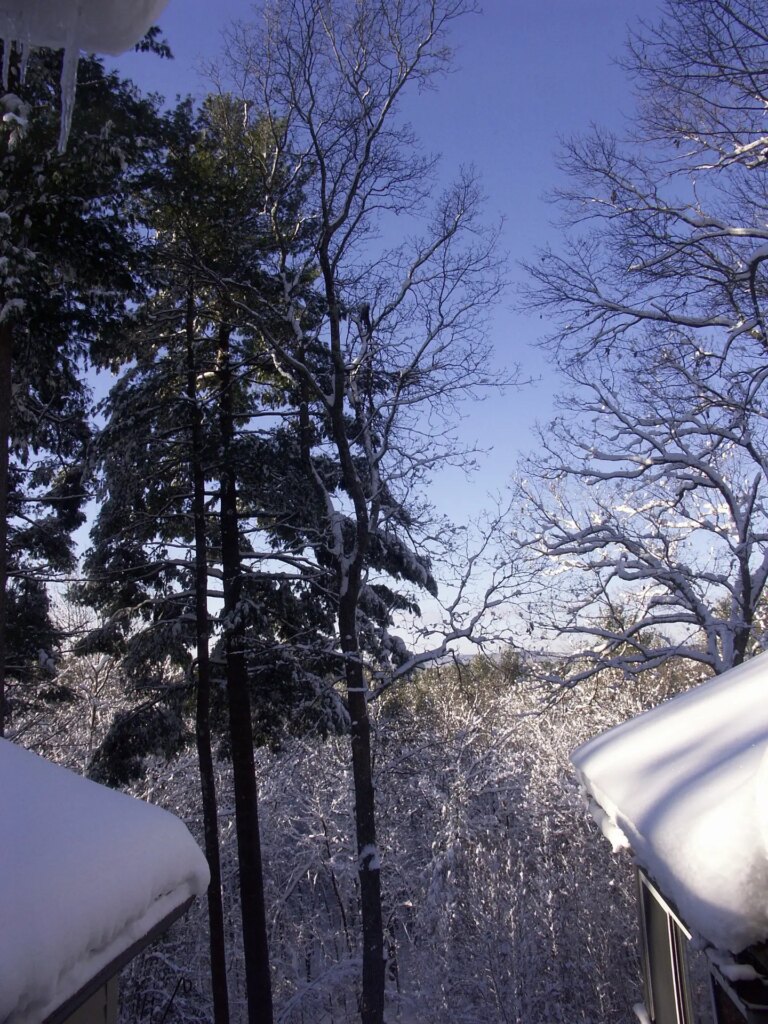

That hill is much steeper than it looks. Better to climb up than down! And those weathered cedar fences are so old that the trees they’re bolted to are growing around them. We believe that a dairy farm was once here. And as shown below, the fences form a kind of funnel that may have channeled cattle into a hilltop corral. Partly visible between the fences to the right of middle is an old granite hitching post with its iron “rein rings” intact (but covered in snow):

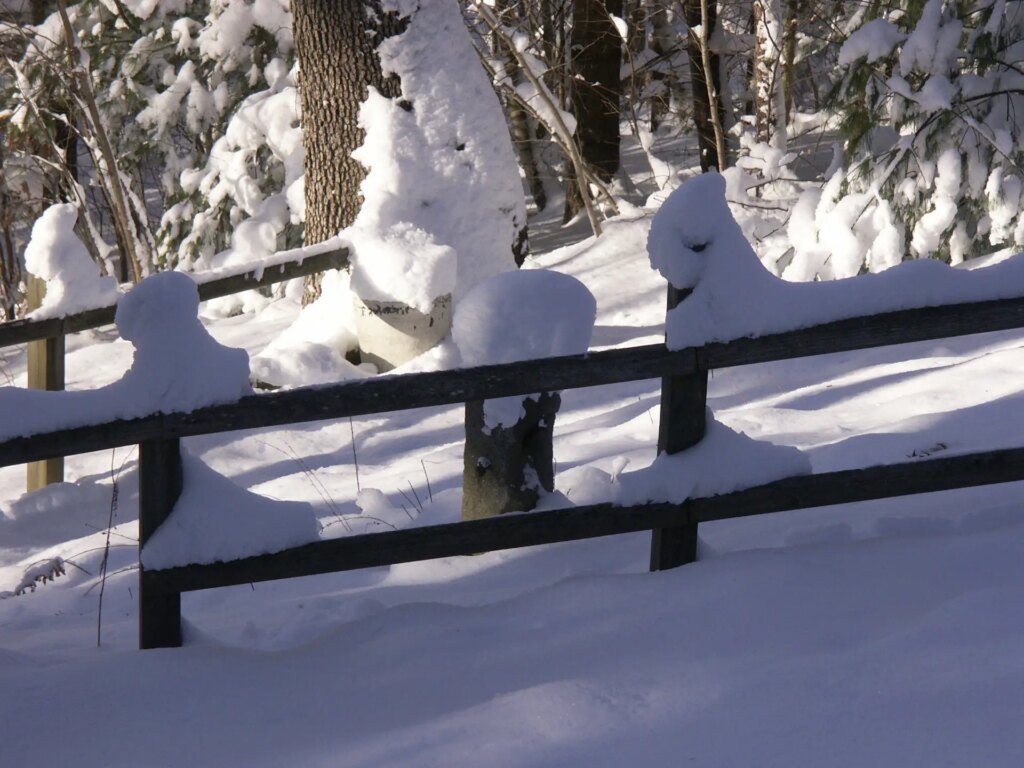




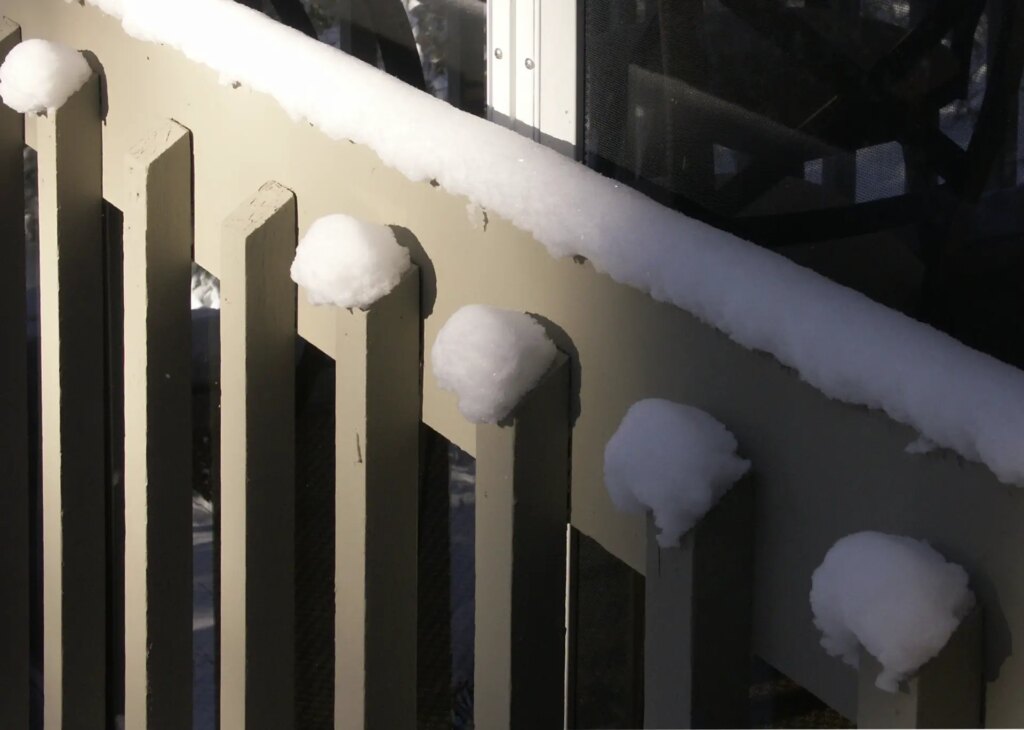

And finally, a three-season seating area in front of our building. Nearby, a glacially deposited boulder hosts a lichen that could share its birth year with Galileo! The reason I think so is described in this article. NOTE: I shot this scene through the same window screen as the above photo, but the camera saw right through it.

Not Too Bad!
As mentioned earlier, I did not artificially enhance the photos’ colors. My only post-processing was to re-spread RGB tones across their entire ranges using the Levels command. As you see, the Minolta A1’s exposure meter does a nice job. It’s one of the two digital bridge cameras I’ve kept.
The other is a higher-spec 8MP Olympus C-8080 WZ, with its own amazing lens. As described here, I use it to quickly digitize film for my 35mmc articles. And that’s possible because– while the camera’s specs claim its Super-Macro mode focuses down to around an inch away– when set as described in the article, the distance shortens to about half that.
So with the Olympus around, why do I keep a 5MP Minolta A1? Five main reasons:
- Its 7x optical zoom in a more compact body than the Olympus’s (with a shorter 5x zoom).
- That fully manual zoom ring (versus the Olympus’s toggle switch).
- The A1’s articulating EVF and rear LCD (seen in the opening photo)… as opposed to only an articulating LCD on the Olympus. The A1 viewfinder also swings up to fully vertical– perfect for taking “look-up” shots of mushrooms!
- The clever way its “anti-shake” technology conserves battery power. In most later cameras, the feature is either on or off. But on the A1, you first push a button on the camera back to put anti-shake in “stand-by” mode… and the feature kicks in automatically whenever one’s fingers wrap around metal strips on the front of the hand-hold! (They’re visible in the opening photo.) And as soon as one stops holding the camera, anti-shake returns to stand-by. Very clever, and it still works well.
- Those– plus the A1’s more compact, but just as sturdy, form factor– make the camera a super-flexible “weekender” when I don’t really need my 20MP Lumix ZS100’s 10X zoom.
–Dave Powell is a Westford, Mass., writer and avid amateur photographer.
Share this post:
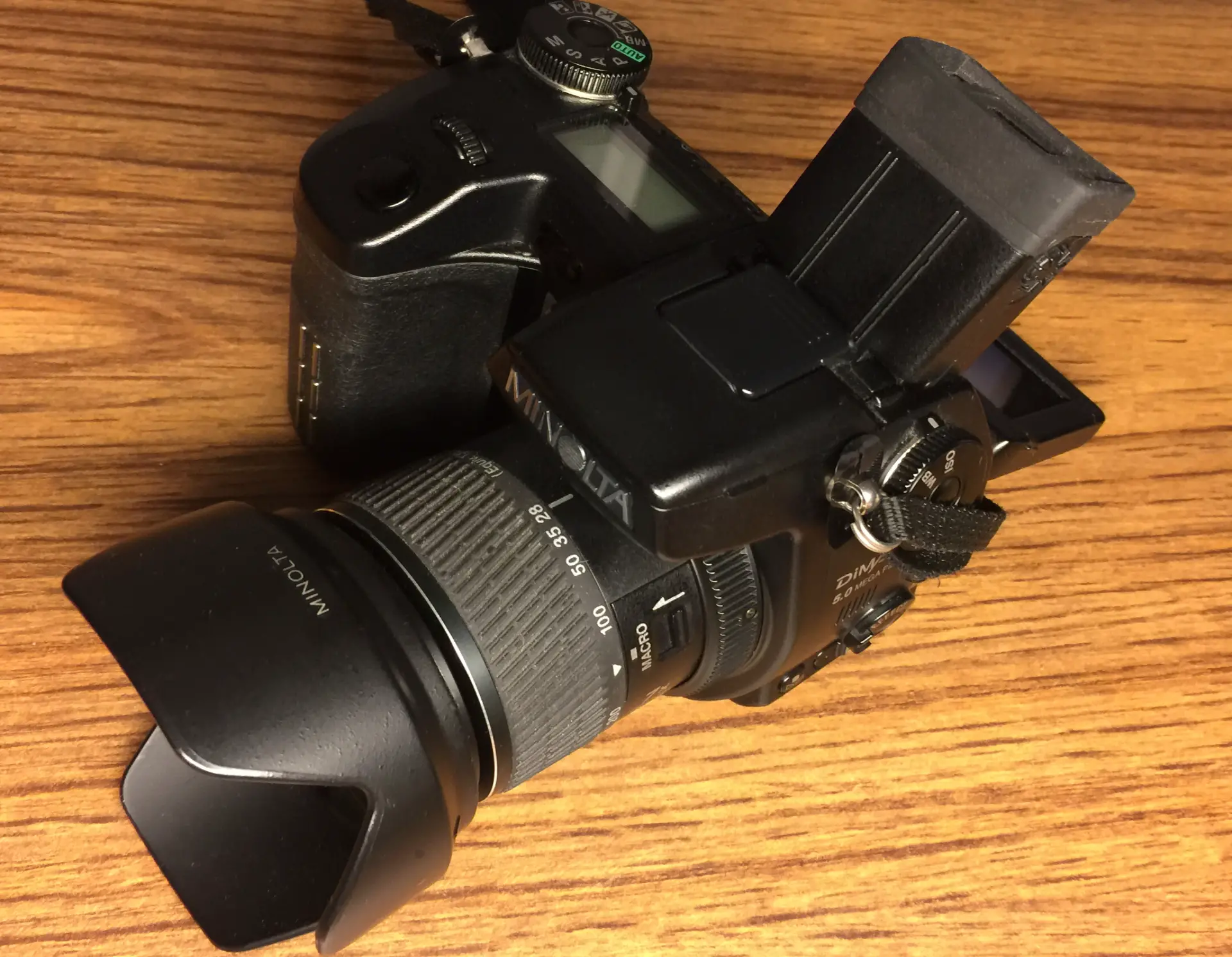
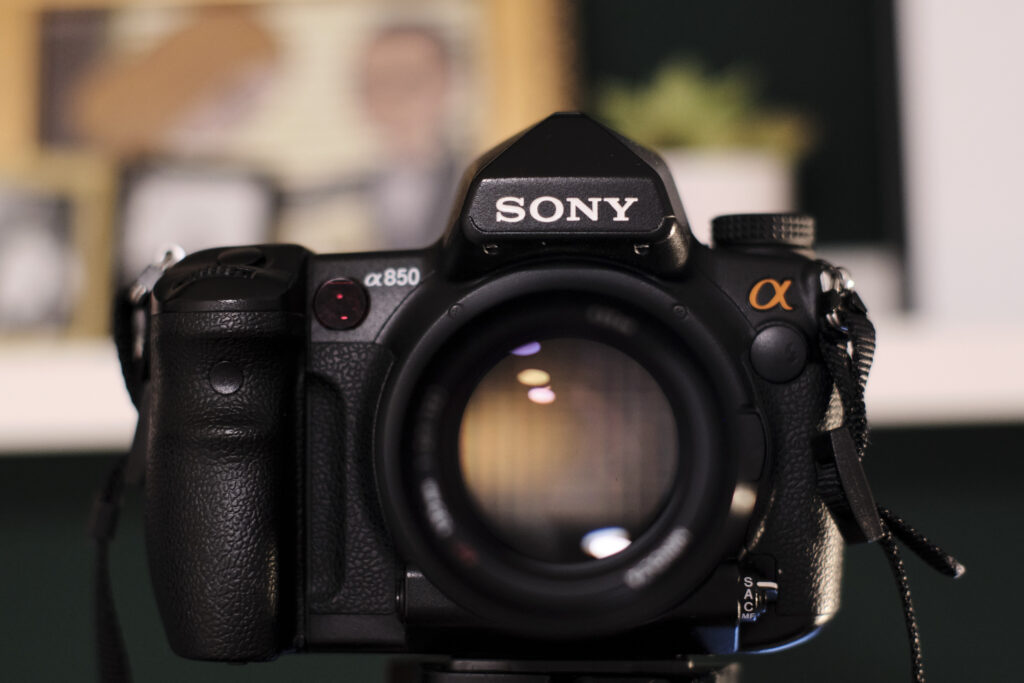
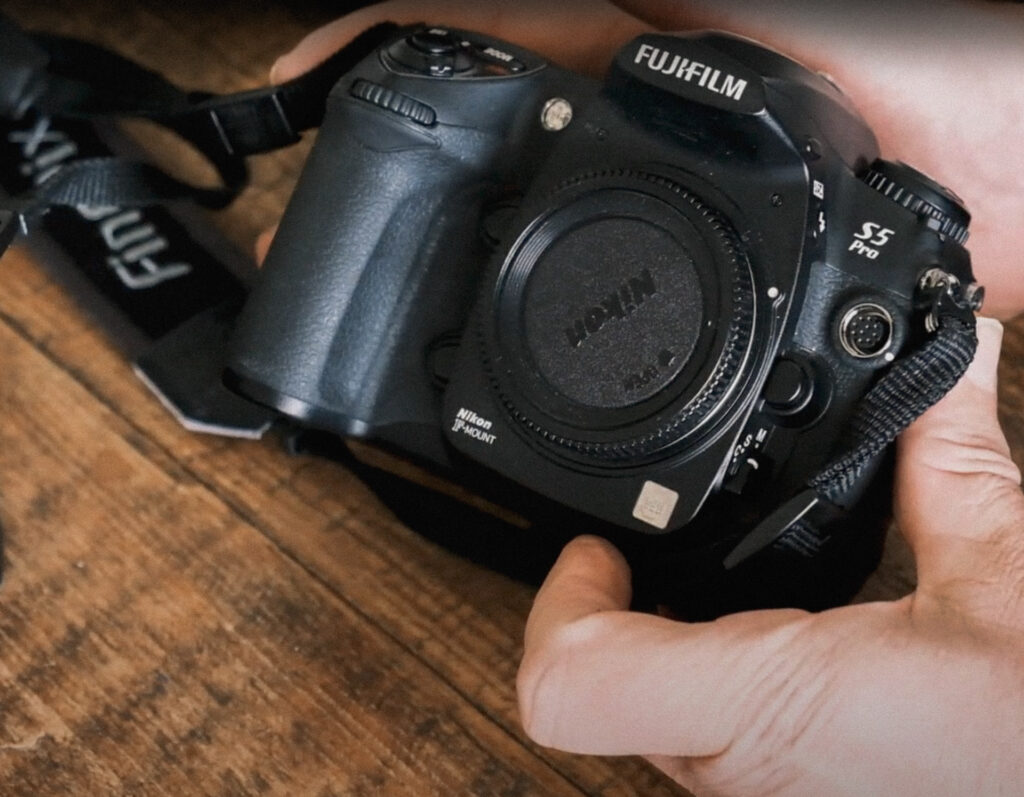
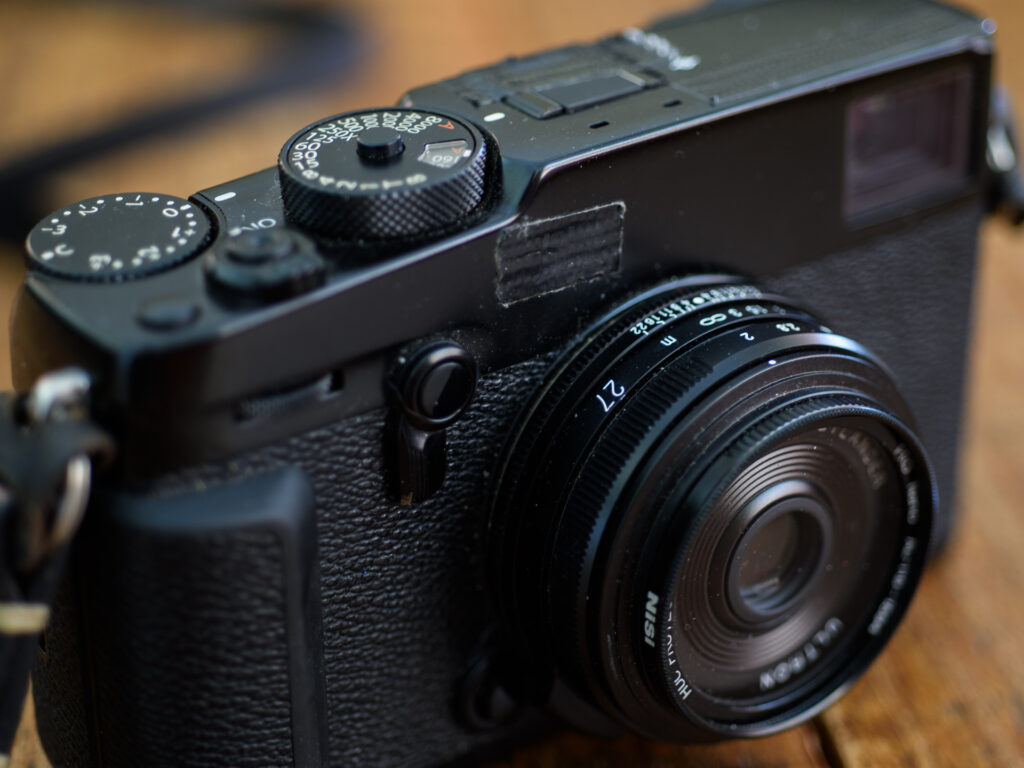
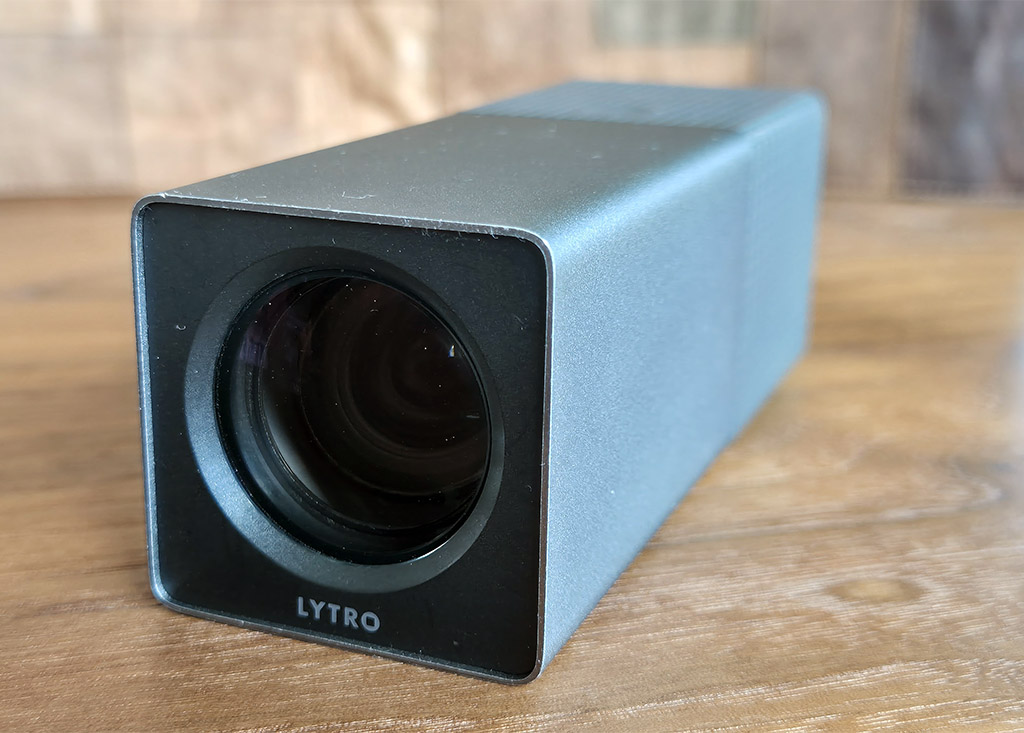




Comments
Ibraar Hussain on Resurrecting a beloved Minolta A1 during some snowy Jankuary isolation
Comment posted: 31/01/2024
Really enjoyed the article and the lovely winter photos !!
Amazing now well this holds up
I used to have the KM A200 and then the A2 which I believe are this A1’s successors. Both a joy to use and have a cult following!
You have inspired me to have a look for another one - either of the two I used to have.
Comment posted: 31/01/2024
Comment posted: 31/01/2024
Comment posted: 31/01/2024
Bill White on Resurrecting a beloved Minolta A1 during some snowy Jankuary isolation
Comment posted: 31/01/2024
Comment posted: 31/01/2024
Geoff Chaplin on Resurrecting a beloved Minolta A1 during some snowy Jankuary isolation
Comment posted: 01/02/2024
Comment posted: 01/02/2024
Roger on Resurrecting a beloved Minolta A1 during some snowy Jankuary isolation
Comment posted: 01/02/2024
Comment posted: 01/02/2024
Rob Stammers on Resurrecting a beloved Minolta A1 during some snowy Jankuary isolation
Comment posted: 02/02/2024
Regards Rob (uk)
Comment posted: 02/02/2024